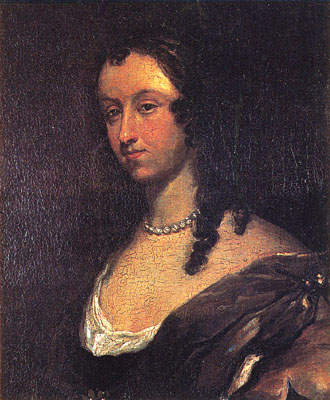Over the past three weeks we have been witnessing a fascinating debate on “race and the culture of poverty” between two of America’s smartest liberal columnists. Although generally eloquent and on target, there have been times when Ta-Nehisi Coates of The Atlantic and Jonathan Chait of New York Magazine have talked past each other, with Chait at one point noting that he himself doesn’t agree with the “Jonathan Chait” who is described by Coates. Aphra Behn’s 1688 memoir-novel Oroonoko helps us understand what is going on.
The debate began when Republican Congressman Paul Ryan essentially blamed young urban black men for inner city poverty. (I blogged on that here.) Coates of course took exception but then went a step further. Ryan, he said, was saying something similar to what President Obama has been saying about a culture of poverty. Both blame the victims rather than the conditions leading to the problem. The problem isn’t debased culture, Coates maintained. It’s the result of institutionalized racism, which includes the absence of inner city jobs.
The link between Obama and Ryan drew the respectful ire of Chait, who argued that it would be surprising if there were not a culture of poverty left over from years of slavery and Jim Crow. Coates countered that Chait was ignoring what it is like to be a black man in current day America and accused Chait of underplaying the impact of current day racism. Chait wondered why Coates was so pessimistic given the strides that have been made since slave times. And so on.
Debates like this are very useful if people are open to the insights that they yield. They are not if they prompt people to hunker down into entrenched positions. Here’s how Oroonoko helps us open up to what can be learned.
The purported memoir of a white woman who befriends a slave in colonial Surinam, Oroonoko dramatizes the differences that can arise between purported allies in intolerable circumstances. The work makes clear that those who are directly impacted by injustice will always see the world differently than those who are not, no matter how sympathetic the latter may be. Throughout Oroonoko Behn-the-character counsels patience to the slave Oroonoko and Oroonoko is sometimes reassured and sometimes not. Ultimately he instigates a slave revolt that fails, leading to his grisly execution.
I’ve described the ins and outs of their friendship in another post so I won’t repeat myself here. I’ll just note that Behn bends herself into contortions as she tries, like Chait, to maintain a positive outlook while Oroonoko, like Coates, finds himself alternating between hope and despair. (Coates is in despair in this debate but that’s not always his stance.) Sometimes Oroonoko buys Behn’s assurances, flimsy as they are, and other times he flares up at her, even though she is the only real white friend he has. To be sure, she’s an unreliable friend, but she’s still a friend.
Inequality leads to problems with other friendships in the book as well. Behn, as a woman, wants to be respected by the male colonialists, but they give her a place at the table only to the extent that she will keep an eye on Oroonoko. Think of this as Chait trying to maintain a bridge with conservatives, even though they might well use his words in support of Ryan’s attempts to slash anti-poverty programs. (“See, even Chait agrees with Paul Ryan.”)
For his part, while Oroonoko wants to be friends with his fellow slaves, they see him as a privileged black man who is using them for his purposes. In one way, Coates is like one of these slaves in his accusations of Obama: he claims that the president is currying favor with whites by his “culture of poverty” remarks while refusing to talk about America’s continuing racism. If part of Obama’s appeal was that he would lead us into a post-racial America, then it wouldn’t serve his purposes to admit to how little he has moved the needle, how entrenched racism continues to be. But lumping potential friends together with enemies isolates one as the revolting slaves are isolated. Unlike Ryan, Chait and Obama are not out to savage America’s safety net.
I take two major lessons away from Oroonoko. The first is that, in a situation where there are no good options, alliances between black and white liberals will always be tense. In Behn’s case, the very fact of slavery inevitably puts a strain on her relationship with Oroonoko. Even if she were ten times more sensitive than any of us ever are, conflicts will arise. Similarly, in a society where levels of black poverty are unacceptably high and where many in Congress want to make the situation even worse, Chait and Coates will fight over how to make the best of a bad situation. Do you trumpet the fact that things are getting marginally better or focus on how bad things still are?
The second lesson is that friends and allies need to keep trying to work things out, uncomfortable though their conversations may be. Behn and Oroonoko can never see the world in the same way, and neither can Chait and Coates. But if they keep talking—and more important, keep listening—they have a better chance of focusing on the real culprit and figuring out a meaningful response.
This won’t necessarily yield immediate results. British slavery continued on for almost 150 years after Oroonoko appeared. On the other hand, the work, turned into a theatrical drama, did play a role in both the British and the American abolition movements.
Literature can provide us a space outside our own battles to understand what is going on. Then we can apply what we have learned.


